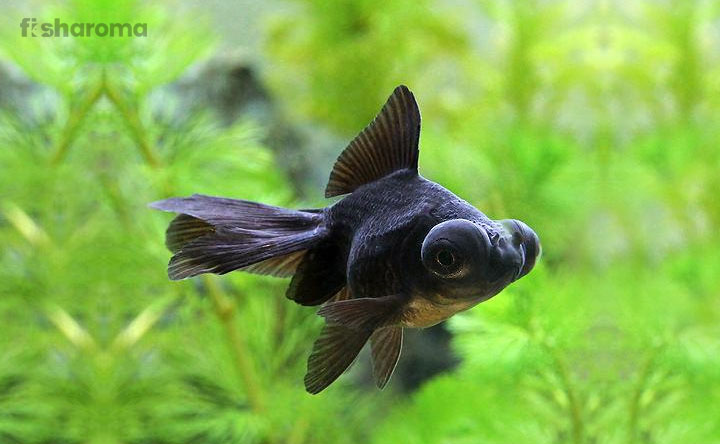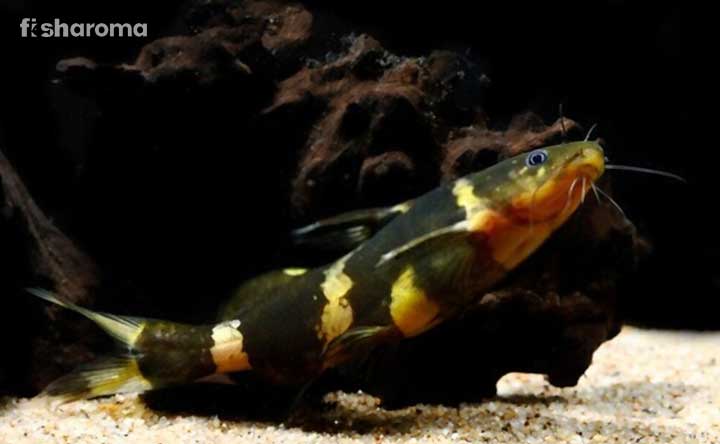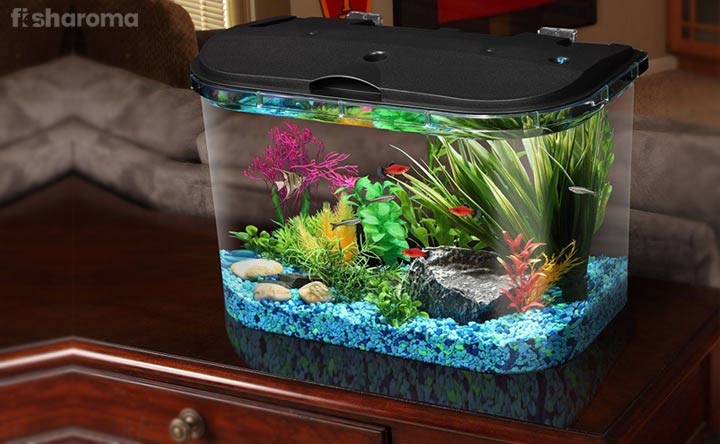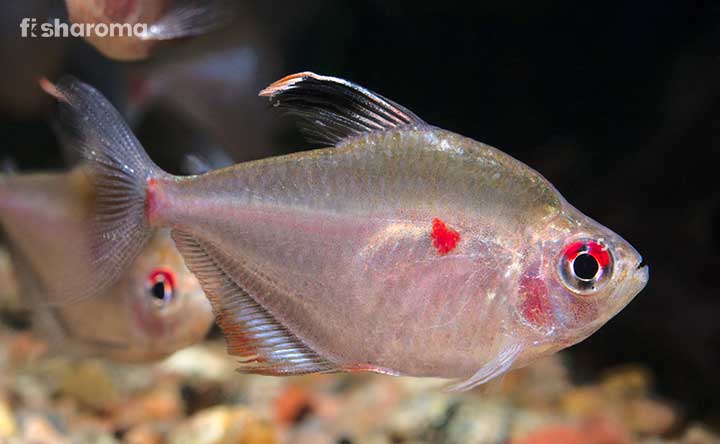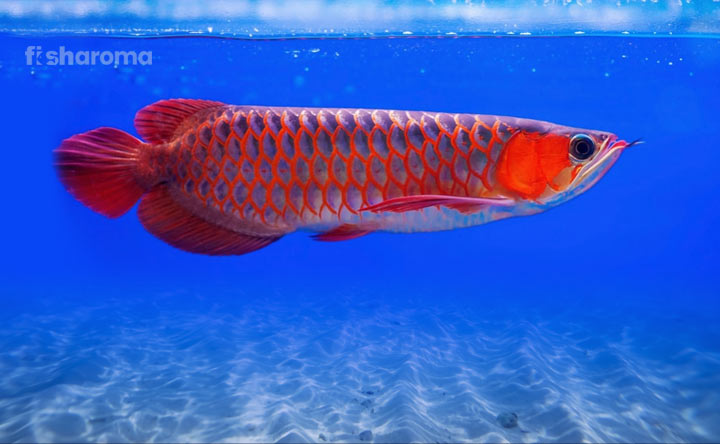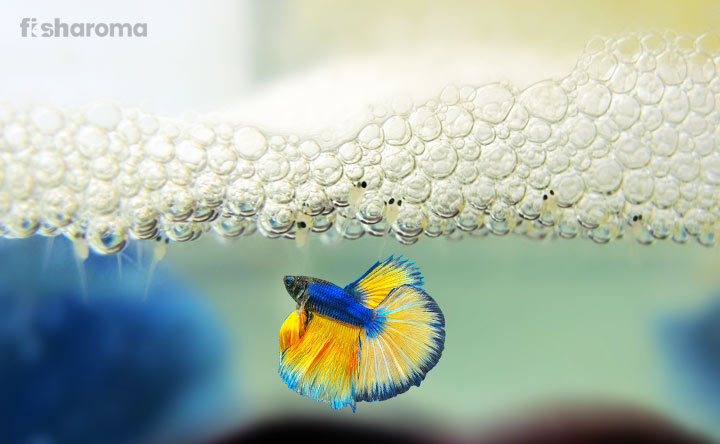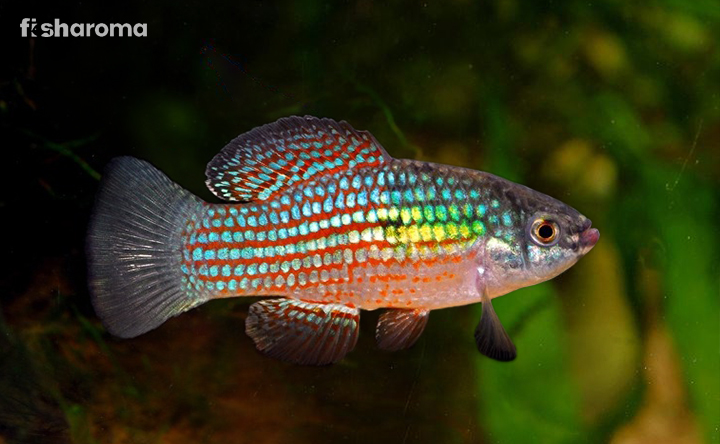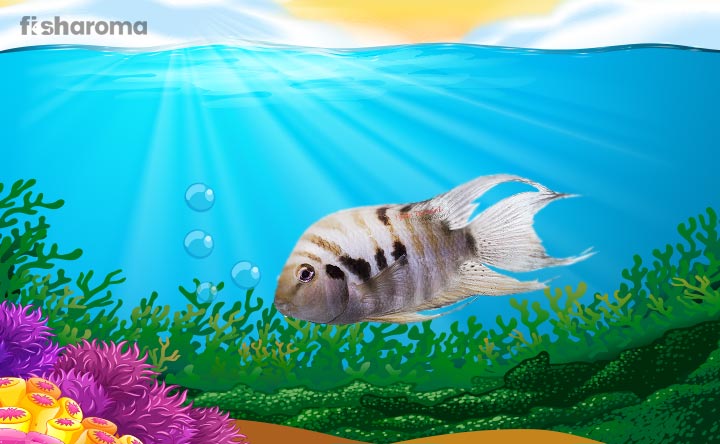Diamond Tetra- A Care Guide To Our Diamond Characin
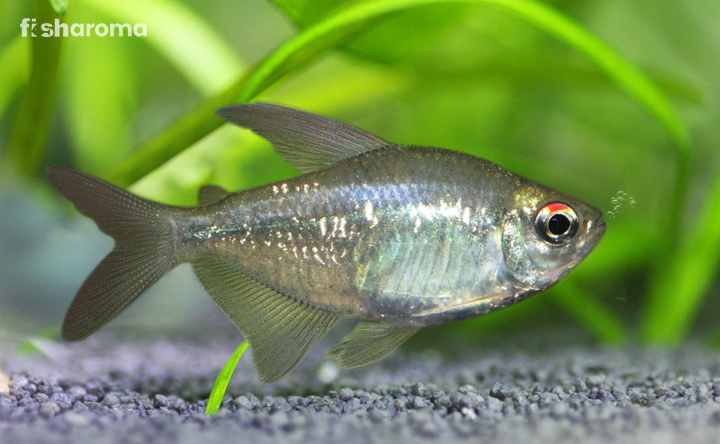
The Diamond Tetra is also known by the name of Diamond Characin are freshwater fishes of small size. Putting glory to their nickname, these specimens of the Characidae family are known for their massive glimmery appeal. They do the most, as not only are they beautiful, they are easy to care for.
So, if you’re looking to make this extraordinary variant of Tetras your very next addition, we just have what you need in this complete care guide. Let us get started.
Key Specifications
Here goes a few key elements you need to check before you get started:
| Scientific Name | Moenkhausia pittieri |
| Origin | Lake Valencia, Venezuela (South America) |
| Lifespan | 3-6 years |
| Colours/Patterns | Silver hues |
| Temperament | Peaceful |
| Size | About 2.5 inches |
| Diet | Omnivorous |
| Family | Characidae |
| Compatibility | Compatible in a peaceful community |
| Tank size | 15 gallons |
| Care level | Intermediate but great beginner fish. |
| Water preference | Freshwater |
Overview
These intricate species known by the name of Diamond Tetra are famous for their appeal and comparative ease in the department of care level. All that perks aside, they are fun to watch and all these factors make them decently beginner-friendly.
These peaceful clusters of diamonds in the water-world are peaceful. Along with being pretty flexible when it comes to omnivorous eating preference, these South American wonders deserve more attention than they get.
Origin and Habitat of Diamond Tetra
Originating from the lands of South America, precisely the region of Lake Valencia in Venezuela, our beautiful Diamond Tetra is truly a wonder of its own.
The usual preference of these Tetras would be slow-moving water bodies like tributaries. They are mid-dwellers, which is evident from their preference of shallow waters, naturally. However, it is a rare sight for them to be seen on the surface unless there’s food, or something that catches their attention enough to be a potential feedable.
Appearance of Diamond Tetra
There is no doubt in the fact that Diamond Tetra fishes really look very shimmer-shiny from their bright and appealing silver finish.
Colour
Maintaining the appearance of an actual diamond in water, these fishes have iridescence in their silver hues, which can reflect multiple colours (colours like blue, green, orange and even gold). The more interesting fact, other than the extraordinary iridescent quality in their vibrancy, it gets better with age, reaching its peak at complete maturity.
Size
The size-range would be around 2-2.5 inches approximately. Since these Tetras are very small in size, the maintenance is fairly easy. The same fact makes them flexible to a varied range of tank sizes, which makes this species pretty adjustable for starters.
Behaviour of Diamond Tetra
The Diamond Tetras are fishes of peaceful temperament. This particular nature makes them a good schooling fish, who prefer to exist in odd groups of five or seven.
On a good note, aggression in Diamond Tetras is not a worry-some fact as it is playful. They visibly scavenge or search for food in groups for the most.
Lifespan of Diamond Tetra
Although, the lifespan for the precious Tetras could range anywhere within 3 to 6 years in an aquarium scenario. Still, the life expectancy majorly depends on the living conditions and care concentration, especially in captivity.
Diet of Diamond Tetra
These omnivores by the name of Diamond Tetra, have a varied diet. Open to eating most things as a result of their natural preference, they can consume anything like plant matter, aquarium food, live food or even insects in that regard.
To simplify and give you a brief idea of some suitable things you can feed them, let us present you with this list:
- Dry flakes or pellets.
- Brine Shrimp
- Daphnia
- Bloodworms
- Lettuce
- Frozen fish-food
- Plant matter
Tank Requirements for Diamond Tetra
Let’s have a look at the things you must keep in mind:
Tank Lid
The perk of a tank lid is that it protects the tank from water pollution. So the exposure to foreign elements, which is a potential harm to the tank-water’s health is prevented. Other than that, they like to swim around in medium-sized schools of up to seven fishes. Their spread out movement, other than the playful bit may lead to some sort of unfortunate accident, and a tank lid prevents that.
Tank Size
The Diamond Tetra fish only need a bottom-line tank size of 15 gallons to thrive. We recommend you increase the tank size with numbers in the school.
Substrate
The Diamond Tetra fishes prefer their substrate to be fine sand. They like their substrates fine and soft as they, either way, spend most of their time being middle-dwellers. These fishes rarely take journeys to the bottom, so fine sand makes to be the perfect fit for that purpose. However, the substrate should be preferably darker to glorify the shine that reflects from the fishes. This instantly enhances the overall aura of the tank, which is a win-win.
Filter
Filtration is an essential process of grave importance, as the malfunction or absence of the same directly affects the well-being of the fish. Air-powdered filters serve the purpose well, especially in the case of a Diamond Tetra tank.
Ornaments
Driftwood or floating plants make a very good additional ornament idea for a tank filled with Diamond Tetras. They like to swim through layers of soft vegetation and act playful with each other. Plus, following this is very good for close emulation of their natural habitat, with enough hiding spaces to fit their nature.
Lighting
The lighting should be low and subdued. These fishes do not really like much lighting and prefer shadows, so it is good to play it safe.
Presence of Flora
The presence of vegetation like Java Moss, or most floating plants is beneficial for the tank. The natural qualities of the plant not only provides the water with oxygen, but allows the fish to lead a more natural life.
Cleaning Method
The Diamond Tetras produce a decent amount of waste, still, a time to time clearance is suggested. Unclean water in the tank is directly detrimental to the fish’s health, as it will affect the parameters and overall water environment.
Keep an eye out for the sides of the tank to prevent any pollution possibilities. Application of a soft cotton cloth, gently used to wipe the waste off is a good way to do so.
Water Type for Diamond Tetra
Water Type or the water parameters are of utmost importance when it comes to the health and overall well-being of the fish. The profile determines a lot when it comes to that, hence it is something to be noted if you are planning ownership of these wonderful critters.
Cutting to the chase, we know the importance of a proper water profile. Let us have a look at a few things you may need to know:
| Hardness | 9-20 dGH, 4-8 KH. |
| Temperature | 22-26 Degrees Celsius |
| pH | 6.5-7.5 |
Hardness
The Diamond Tetra fishes like their water soft and additionally, it has to be somewhat acidic. (slightly acidic water means 10-50 ppm. 10 ppm is 1 dGH, so 50 ppm is 5dGH. Thus, for Diamond Tetra will be 4-9 dGH).
Temperature
These Diamond Tetras are extremely hardy, still, maintenance of the right temperature is important. The water should not be very cold, and needs to have a balanced temperature of 22-26 Degrees Celsius. Application of a water heater should do the job when necessary.
pH
pH has a lot to do with the fish’s health, so a range of 6.5-7.5 is our suggestion for you to look after.
Compatibility of Diamond Tetra
These wonderful beings are of peaceful temperament and they love nothing more than a species-exclusive tank. That does not make them any less open to different mates to share their tank with. Although, they may be the happiest with alike mates, they are not known to be bothersome to other species and in fact co-exist pretty well in a community tank.
Suitable Tank mates
Just to give you a clear idea, let us have a quick look at some good options for tank mates you can pair these precious Diamond Tetras up with, other than their kind of course. Here goes:
- Cory Catfish
- Guppy fish
- Other species of Tetra
- Bottom-dwelling peaceful fishes (Other than Shrimps)
- Molly fish
Unsuitable Tank mates
Neither our choice of buddies can be aggressive, nor large. Our peaceful beings do not want their tank mates to overwhelm them, cause them stress or worst-case scenario, prey on them. Therefore, the pairings need to be done accordingly and you must abstain from choosing unstable tank mates for our fish of interest, the Diamond Tetra.
Breeding of Diamond Tetra
The process of breeding in Diamond Tetras can be done either in individual pairs or in a group of 12, there are no specifics for that. These hardy beings are egg-layers, so after the lighting is turned up a little bit for the sole purpose of spawning, a Spawning Mop or suitable form of vegetation needs to be added for the eggs to be contained and secure.
Eggs are released from the female specimen’s end after the primary branch process of breeding has taken place, following which the male specimen fertilizes them. The adult fishes need to be immediately isolated afterwards from the lack of parental instincts in them.
The fry is expected to hatch in about 24-36 hours, where they feed on egg-sac matter to survive. Once the offspring is ready to swim free, infusoria or baby shrimps are a good choice for the initial feeding. First look at the new batch, the colour may appear faded comparatively. However, there is no reason to worry, as the attractive iridescence starts developing later on in about 9 months as they go towards adulthood.
Diseases of Diamond Tetra
Since the Diamond Tetras suffer from the most common freshwater diseases, let us name some for you to get a more vivid idea.
- Parasitic Diseases- Originally known by the name of Ichthyophthirius multifiliis or as we know “Ich” is a disease that can seriously hamper the fish’s health. As a result, infliction of bruises, missing scales, trouble in breathing process or even lethargy, these protozoan fish parasites can seriously affect the fish’s health.
- Bacterial Diseases- Bacterial diseases like Tuberculosis in fishes, Dropsy, Columnaris, Fin Rot and more, can fatally affect the fish in ways you would not imagine. For instance, in Dropsy, an abnormal fluid is stored inside the tissues or cavity of the fish’s body. In this case, this disease single-handedly is capable of indicating several underlying causes like the evident bacterial infection or liver damage.
Treatment
A few ways of prevention and treatment are as follows:
- Observe the fish more precisely in case your eyes catch any early signs of illness, hence tending to the issue early on, to increase chances of recovery.
- Maintain the tank-water quality by keeping a careful look at the parameters, and properly maintain the same.
- Isolate the affected, and safely remove the parasite in case of any parasitic disease is necessary.
Summary
The Diamond Tetra fishes shine bright like a diamond in the freshwater body! Being extremely beautiful is not all, as they are a conclusively hardy species. Serving as an all-rounder, these fishes have a diamond-like glimmer to them which catches instant attention. They are small in size, which makes handling them easier in addition to being peaceful. Being peaceful is indeed considered a flexible temperament for beginners to deal with.
Besides all the perks they have to offer, there is literally no reason why you would not want a school of these in your tank. Ultimately, they compliment the entire presence of your aquarium so well, that it leaves you with no choice to not pick them as your next tank buddy.
Similar Care Guides You may like
- Cardinal Tetra Care Guide: Just about the size of our precious Diamond Tetras, these tiny fishes of just about 2 inches are no less. Let us enlighten you with more on this vibrant wonder.
- Neon Tetra Care Guide: Similar to their relative, the Cardinals, a Neon Tetra is also from the Characidae family and is yet another wonder like our very own Diamond Tetras. Know more about them right here.
- White Cloud Mountain Minnow Care Guide: Another small fish species just like our Diamond Tetras, these fishes are very hardy.

